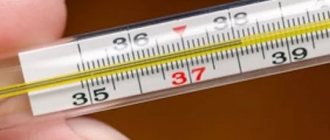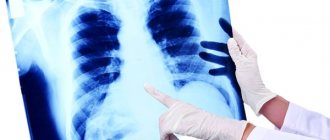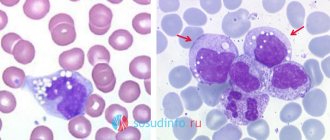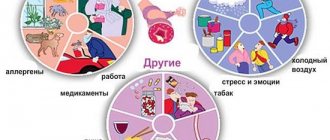Body temperature often worries people when it exceeds the well-known figure of 36.6 °C, but the opposite situations also occur. When there is a low body temperature, the causes in an adult can be no less serious than with elevated levels.
Features and symptoms
Everyone has heard that high temperature is a clear sign of illness. But not everyone knows that a low temperature also indicates the development of some kind of disorder.
This is especially critical when it lasts for a long time. The danger of this condition is that it does not cause any particular inconvenience, but patients note weakness, loss of strength and mood. Someone feels chills. If you have similar symptoms, then you don’t need to remain inactive for a long period, attributing everything to fatigue and lack of sleep.
Medical assistance in such a situation is necessary.
A low temperature is considered below 35.8 degrees.
Self-diagnosis will not provide an accurate explanation of the disease, since a thorough examination by a specialist is required.
When you notice a low temperature on the thermometer, know that this is hypothermia. It is not harmless, as it has an effect on metabolism, the functioning of organs and the brain. This is especially felt in the activity of the cardiac and nervous system.
To do this, it is important to know the symptoms in order to provide the necessary support to the body in a timely manner.
Signs of hypothermic failure:
- chills;
- feeling of hypothermia;
- weakness;
- pale skin;
- chronic fatigue;
- decline in general condition;
- constant drowsiness;
- low pressure;
- slow heart rate;
- apathy and mood swings;
- dizziness;
- fog.
Symptoms cause slow blood circulation, dilation of blood vessels and changes in brain function. A person’s hormonal performance decreases, which causes pressure on the heart. Subsequently, all this can lead to deterioration of vision and hearing, as well as the speech apparatus.
What body temperature is considered low?
A person has a thermoregulation center in the brain area, and with the slightest disturbance in its functioning, body temperature begins to change. It is impossible to accurately determine the low temperature in the same way for all people due to the individual characteristics of each organism.
The norm is considered to be a temperature of 36.4–36.8C. But doctors increase the range from 35.5C to 37C. Anything below or above this norm is already a deviation. You can raise the low temperature barrier yourself at home. But if the problem lasts more than a day, it is better to go to a general practitioner to determine further actions.
A decrease in temperature exposes the body to malfunctions of all systems and threatens to disrupt normal metabolism.
Exacerbation of chronic diseases can be manifested by a temperature of 35C. A decrease in temperature to 29.5C leads to loss of consciousness, and with an indicator of 27.0C the patient falls into a coma.
Factors of ill health
When you notice an increase in body temperature, you often understand the reasons for this condition. Reduced indicators also have reasons, both random and natural.
These include stress and medication, sleep problems and exhausting diets, alcohol or drug poisoning.
Surprisingly, there are those for whom this decline is considered a normal state of affairs. Do not immediately panic when you see such a result on a thermometer. Sometimes it simply occurs due to freezing. This can be corrected with warm clothes, hot tea and healthy sleep.
If the source is hidden deeper, then consult a therapist, because there are many reasons for this disease:
- dysfunction of the vegetative-vascular system;
- venous dysfunction;
- problems with the thyroid gland;
- drug addiction;
- diabetes;
- being in a coma;
- diseases related to the adrenal glands;
- hormonal imbalance;
- decrease in hemoglobin;
- peptic ulcer;
- functional kidney disorders;
- depression;
- loss of appetite;
- problems with the spine;
- diseases caused by an imbalance in blood cells.
A lack of hormones slows down the processes occurring in the body in an adult and leads to a decline in the activity of the endocrine system. Pathologies of the heart and blood vessels can cause weakness, apathy and slow blood flow in the extremities.
You've probably often noticed coldness in your hands and feet when your body temperature is low. At such moments, the body struggles for balance, and attacks of aggressiveness or, conversely, lethargy occur.
Main reasons
Various reasons can lead to hypothermia: both the state of the body itself and external changes.
Environment
Body temperature naturally decreases with high humidity, cold and strong wind. In such weather conditions, the body actively loses heat and cannot compensate for this condition.
The development of hypothermia is promoted by: inappropriate clothing, alcohol intake, and decreased physical activity. In this case, hypothermia occurs, the first sign of which is a decrease in body temperature, that is, the skin.
This condition is especially characterized by centralization of blood circulation, the brain and heart actively feed to keep the person alive, while cold and chills are felt in the periphery due to vasospasm and decreased blood flow.
What to do about it
To increase heat production and reduce heat transfer in this case, you need to start from the outside: first go to a warm and dry room. There is no need to raise the temperature sharply; you need to dress warmly and dry your skin. It is not recommended to immediately take a hot shower or “warm up” with mulled wine or other alcohol. This, on the contrary, will increase heat transfer.
It is worth brewing tea and drinking it warm in large quantities, replenishing the volume of circulating blood. Limbs should be warmed up gradually. To eliminate severe spasms, you can take antispasmodics: No-shpu, Papaverine. It is also useful to eat immediately after being in such conditions to stimulate metabolism and replenish energy deficiency.
Anemia
A decrease in the amount of hemoglobin will cause a decrease in body temperature. The condition is accompanied by weakness, apathy, pallor, coldness of the extremities, and dizziness. There is not enough hemoglobin in the vascular bed, and, therefore, oxygen. Hence, the intensity of all processes of energy generation and oxidation decreases. Patients with persistent anemia often complain of decreased body temperature. Read more about all types of anemia, symptoms and treatment by following the link here.
What to do
To eliminate anemia, you need to determine its origin, for which you should take a general blood test, determine the level of ferritin, the total iron-binding capacity of the blood serum.
In women, anemia most often develops due to intense blood loss with menstruation or dyscirculatory bleeding from the uterus. You should pay attention to the abundance of blood loss during menstruation, as well as spotting during the cycle.
Blood can also be lost from the gastrointestinal tract: stool analysis and FGDS will help identify it. If the patient has lost a lot of weight and there is constant intoxication, then it is worth looking for a tumor and doing an ultrasound of the abdominal cavity, thyroid gland, and chest x-ray.
To treat anemia, which is most often iron deficiency, iron preparations are used: Maltofer, Sorbifer Durules, Venofer and others. They are taken in courses of 2-4 months, and effectiveness is monitored after 4 weeks: hemoglobin should increase. Sometimes anemia is caused by a deficiency of folic acid and vitamin B12, especially due to stomach ulcers or parasites. To do this, you need to donate blood for these substances, and B12-deficiency anemia will have to be treated for a long time with lifelong administration of maintenance doses of iron and vitamin supplements.
Brain tumors
They may affect thermoregulation if located near this center in the hypothalamus. Metastases and brain dislocation due to compression by the tumor can also change the temperature. Severe headaches and changes in sensory organs or movement and sensitivity may occur. Some tumors, for example, glioblastoma, are hidden for a long time and are detected at a late stage.
A decrease in body temperature can also occur as part of the paraneoplastic syndrome in other cancers. This syndrome is caused by the pathological effect of tumor products on the body and changes not only in metabolism, but also in nervous regulation. Toxins and disruption of vascular tone can lead to a variety of consequences.
What to do
To diagnose tumors in the brain, MRI, scintigraphy, and computed tomography will help. Visualization of the process will allow you to determine a possible diagnosis, but a biopsy will allow you to make an accurate determination. Most often, surgical treatment is performed if removal is possible and the material is sent for histology.
Astheno-vegetative syndrome
This condition is caused by a violation of nervous regulation due to depression of the body after an infection. Severe illnesses such as influenza, dysentery, measles, bacterial meningitis or pharyngitis can cause a persistent decrease in temperature for several weeks after recovery.
Patients complain of weakness, loss of strength, lack of previous interest in activities, sweating appears when the ambient temperature fluctuates, and physical activity is less tolerated. This syndrome is characterized by the presence of low temperature, since the body has an imbalance in the regulation of all processes of internal organs. Hypothermia persists for several months.
What to do
To raise your tone, you should drink multivitamin complexes and supplements: Complivit, Biomax, Selmevit, Alphabet and other drugs balanced in components.
Meals should be nutritious and nutritious to compensate for nutrient deficiencies. After a course of antibiotic therapy, the intestines should be supported with pro- and prebiotics: Bifiform, Bion - 3, Linex, Lactofiltrum and others.
If the period falls on October-March, then it is worth including vitamin D in treatment at a therapeutic dose of 2000-4000 IU per day (Vigantol, Aquadetrim). Dosed physical activity will help supplement the body’s recovery, which will strengthen the cardiovascular system. It is useful to walk in the fresh air for 40 minutes at least 3-4 times a week, as well as sunbathing. Hypothermia and stress should be avoided.
Internal bleeding
This condition is dangerous due to the development of internal organ failure, shock and death. A decrease in temperature is naturally observed due to a decrease in the amount of blood and a drop in the level of energy production in the body. Bleeding is accompanied by weakness, tachycardia, shortness of breath, pallor, which first appears on the mucous membranes, and only then on the skin.
Tactics
We need to find the source of the bleeding and stop it. To do this, they carry out: FGDS, colonoscopy, chest x-ray and bronchoscopy, examination of the uterus in the speculum, a general blood test and a stool test for occult blood. To stop, they take medications: sodium etamsylate, Tranexamic acid, Vikasol. They are prescribed both orally and parenterally.
Endocrinological diseases
A drop in temperature can be caused by:
1. Diabetes mellitus: an increase in blood glucose levels is accompanied by severe thirst, polyuria (increased urination), trophic changes in the skin, pathologies of the kidneys and nervous system. This is accompanied by a decrease in temperature. Emergency conditions in the form of hypo- and hyperglycemia are characterized by hypothermia with coldness of the body, the appearance of sticky sweat, and loss of consciousness.
For diagnosis, you need to donate blood for sugar and glycated hemoglobin, and also check your urine for glucose. Treatment includes diet, glucose-lowering medications, and, in case of unsuccessful glucose control, insulin. It is important for patients to constantly monitor their blood glucose and have insulin and a lump of sugar with them.
2. Adrenal Insufficiency: This disease is associated with a deficiency of cortisol and aldosterone. With their lack, the body develops dehydration, sodium is lost, and heart function is disrupted. The amount of glycogen, the main energy reserve in the body, decreases in the liver. Temperature and pressure naturally decrease.
For diagnosis, an ultrasound of the adrenal glands, an MRI of the brain are performed, and the level of blood hormones is determined. For treatment, hormonal therapy is selected: hydrocortisone, cortisone, prednisolone, fludrocortisone.
3. Thyroid insufficiency or hypothyroidism: the pathology occurs with a lack of thyroid hormones, T3 and T4. The cause of the disease can be either in problems in the thyroid gland itself (nodules or cancer) or in the pathology of the controlling organ - the pituitary gland. The disease occurs with a decrease in the level of energy production: patients complain of dry skin, special edema (myxedema, viscous and dense edema), decreased blood pressure, stool disorders, and decreased body temperature.
For diagnosis, an ultrasound of the thyroid gland, a CT scan of the sella turcica, and an analysis of T4, T3 and TSH are performed. As part of therapy, hormone replacement is prescribed: levothyroxine from a minimum dose until the level of blood hormones normalizes.
Pregnancy
Oddly enough, this state of the body, which in no case can be called a disease, can occur with a decrease in temperature. This is due to strong hormonal changes that occur in the body of a pregnant woman and affect all endocrine glands. Usually, by the second trimester, normalization and adaptation of processes occurs, and 36.6 ℃ appears on the thermometer.
Intoxication
Poisoning the body with toxins can lead to hypothermia directly or indirectly. Some poisons cause respiratory depression, blood circulation and directly reduce the temperature. This is usually accompanied by a decrease in breathing and pulse, and the kidneys suffer. For diagnosis, a toxicological blood test is performed, heavy metal salts are determined, the acid-base state of the blood is analyzed and the level of creatinine is determined.
For treatment, dialysis, hemosorption or hemofiltration are performed; for mild poisoning, the stomach and mucous membranes can be washed. In case of poisoning with specific reagents, antidotes are prescribed (unithiol, sodium thiosulfate and others, depending on the toxic substance). To restore temperature, you need to establish blood circulation and breathing: oxygen therapy, heart stimulation with cordiamine and other cardiotonics are carried out.
Dystonia
Vegetative-vascular dystonia is a diagnosis that is excluded from all official medical classifiers, but this does not reduce the likelihood of developing an imbalance in the nervous system and, accordingly, vascular tone. It is controlled by the autonomic nervous system: sympathetic and parasympathetic. Therefore, an imbalance in their work can cause a decrease in temperature. In general, all changes in vascular tone lead to fluctuations in body temperature, because it is very dependent on this indicator.
Hypothermia causes a decrease in the tone and elasticity of skin vessels, increased activity of the parasympathetic system, generalized vasospasm and increased blood flow in the internal organs, which impoverishes the vascular bed in the “shell”. To treat this disorder, emphasis is placed on vascular drugs, which are called vasoactive: Halidor, Vinpocetine, Pentoxifylline. Sedatives and nootropics are used: Piracetam, herbal preparations Novopassit, Persen. Vascular tone should be trained by hardening, contrast showers, and sunbathing. It is useful to supplement the diet with B vitamins, nicotinic acid, vitamins A, C, E and D.
Ways to deal with dangerous numbers on a thermometer
Low temperature should not be observed for a long period. If you understand that it has taken on dangerous values, then immediately contact a therapist who will carry out the necessary tests and manipulations.
You will need to donate blood for biochemistry and a general section, urine, and also determine the hormonal level and the purity of the tests.
The doctor will make a complete diagnosis of the body by measuring blood pressure. Then he can send the patient for additional procedures (EGC, ultrasound, ECHO). If no serious deviations are found, then you should continue to monitor the temperature throughout the day.
If this is observed in a child, then there is no point in delaying and waiting for secondary symptoms. Contacting a pediatrician should be done immediately.
If you find a reading of 35.5 on the thermometer, then you need to carry out the following manipulations:
- take a vitamin course (E);
- do not neglect immune system stimulants;
- massage the limbs and body;
- drink boiled milk with honey or raspberry jam;
- lie in the bath;
- do not neglect warming up the apartment;
- try to dress warmer;
- prepare rosehip tinctures;
- exclude taking medications not prescribed by a doctor;
- sleep should last at least 8 hours;
- take herbal sedatives;
- take walks in the fresh air.
The complex of these measures will give you the opportunity to activate metabolism and blood flow. Some techniques will allow you to cleanse your body of unnecessary toxins and waste.
Honey and raspberries promote sweating, which brings unstable heat exchange back to normal. After these steps, you need to measure your temperature again. If the condition stabilizes, it is important to monitor the situation for a few more days. If she returns, then contacting a doctor is mandatory.
The fight against this disease is based on the principle of determining the cause of its occurrence. Next, the root of the disease is resolved. If it turns out that the disease is critical, you need to call an ambulance. This will be considered sufficient grounds for emergency medical attention.
The decrease caused by external stimuli can be restored with your own hands. But only after accurately determining the cause.
How to raise body temperature if it is low
Minor hypothermia can be treated using the following methods:
- Wrap yourself in blankets and lie down in bed.
- Use a heating pad to warm your feet (they are the first to react to temperature fluctuations).
- Hot foot baths are also considered a good way. In this case, the water should cover the calves.
- The temperature rises well with hot tea. You can add honey, raspberry jam or St. John's wort tincture to the drink.
- Rub your armpits with black pepper or salt.
- Perform a few simple exercises to increase your heart rate, which will help you warm up faster.
An interesting method is to use the lead found in a pencil. To do this, break the pencil to get the core. Grind it and drink it with a little water. Helps for 2-3 hours.
During hypothermia, any restrictions that are required in diets are prohibited, but overeating will put an unwanted burden on a weakened body.
Even with slight drops in body temperature, you should not ignore the problem. The body is already signaling its failures. Try to find the cause and eliminate it. After all, it is much easier to cope with the disease at the initial stage.
Doctors' opinion
There are debates and reflections on this topic from ordinary people and experienced doctors, who give answers to the question of what it means when the temperature regime goes wrong. If you have these symptoms and their long-term dynamics, you should take the advice of doctors.
Doctors recommend doing morning exercises and taking care of your immune system.
A balanced diet and enough water (2 liters per day) are the key to a healthy lifestyle. Do not neglect rest; on the contrary, avoid stressful situations.
Normal temperature must be maintained at all times. Avoid wearing unnecessary warm clothing in hot weather, or dress lightly on cold days. It is preferable to sleep in a room that is ventilated and not overheated.
Many researchers on this issue believe that this temperature is the result of stress.
The daily routine should be scheduled hourly. Waking up, going to bed, and eating should occur at a set time. Adequate sleep and good rest, according to experts, can have a beneficial effect on well-being.
Alcohol and nicotine should be excluded from everyday life, and medications should be taken only with a prescription from your doctor.
Scientists say that some have a congenital low temperature. This does not add any discomfort to them; their body works as usual. Even such a phenomenon requires an examination by a doctor who can rule out the presence of serious abnormalities.
ARVI
Seasonal viral infections are commonly associated with elevated body temperature, but this is not always the case. Fever is usually observed in the first days of the disease, but during the recovery period, many patients suffer from weakness and hypothermia (in the morning the temperature does not rise above 36 degrees), associated with recent stress and a temporary decrease in the body's defenses.
When to sound the alarm
If you faint, you should seek medical help. If after the manipulations the temperature does not drop, then this is also a reason to go to the hospital.
If the decrease occurred due to the fact that the individual was frozen, then medical intervention is necessary. Your delay can cause irreversible consequences that will be difficult to stop in the future.
This happens due to the fact that cells and tissues are affected. For their optimal functioning, a certain temperature is needed (36.6). Thus, this can provoke disruptions throughout the body.
If you notice the following symptoms in yourself or your loved ones, you should act immediately:
- fainting;
- profuse sweating;
- pale skin;
- weakness;
- cold feet and hands;
- decrease in pressure;
- nausea and vomiting;
- lack of air;
- trembling of limbs;
- dysfunction of the vestibular apparatus;
- reduced degree of sensitivity;
- bleeding;
- pain syndrome;
- arrhythmia and epilepsy;
- chills;
- eating disorders;
- sleepy state.
02/27/2018 Low body temperature
Brain tumors
The center responsible for maintaining a constant temperature in the body is located in the hypothalamus. A neoplasm (malignant or benign) that arises in this zone disrupts the regulation of heat exchange processes. Patients suffering from brain tumors, along with headaches and dizziness, often complain of chills and a feeling of coldness in the extremities.
Prevention
To prevent colds and viral diseases, which cause a decrease in body temperature, you should harden yourself, play sports, and lead an active life. When hardening for the first time, you do not need to immediately douse yourself with ice water. The temperature should be lowered gradually: first warm, then cold, and then ice.
Nutrition should be complete. You need to choose foods rich in vitamins and minerals. In cold weather, when going for a walk, you need to dress warmly. You need thick, waterproof, comfortable shoes. In winter, you should not wear tight boots, as they compress the blood vessels in your legs and make your limbs freeze.
You should not worry if you still have a cold and your temperature drops. This means that the immune system defeated pathogenic microorganisms, but then weakened. We need to help him recover.
Thus, low temperature can occur in adults and children. In this case, it is advisable to immediately consult a doctor to find out the cause. The best solution for this condition is to strengthen the immune system.
Some useful tips
It is clear that taking antipyretics at low temperatures is extremely contraindicated.
How to deal with this condition?
Doctors give some useful advice:
- complete rest is required - no physical or psychological stress;
- You should sleep at least eight hours;
- take warm baths;
- wear comfortable clothes that do not contain synthetic fabrics;
- drink lemongrass tincture until you achieve recovery (it stimulates the immune system);
- take calcium and vitamin C.
Sometimes, after the flu or ARVI, the temperature remains at 35 or 36 degrees and is in no hurry to rise.
This means that, most likely, the body has not yet fully strengthened.
Therefore, it is necessary to continue to observe the above measures and strengthen the immune system in every possible way until the condition is completely normalized.
A warm bath is what you need at low temperatures!
Even 35.8, 36.1 and 36.2 degrees for a cold in adults can be considered low - depending on how the patient feels.
At the same time, 36.9 degrees, it would seem, is included in the range of normal temperature, but in some people, based on their individual physiological characteristics, it is considered as an elevated indicator.
So let your doctor determine how and why your temperature has dropped, how it threatens your health, and what you should do next.
Diagnostics
The main diagnostic measure for hypothermia in children and adults is temperature measurement. However, it should be noted that the measurement of the thermal state of the body is carried out not in the traditional way, but using special electronic thermometers in the following places:
- in the external auditory canal;
- in the rectum;
- in the groin area;
- in the nasopharyngeal region.
The following diagnostic measures are carried out:
- blood sampling for general and biochemical analysis;
- general urine analysis;
- daily measurement of diuresis frequency;
- blood test for electrolyte levels and acid-base balance;
- coagulogram;
- pulse oximetry;
- ECG;
- daily blood pressure measurement;
- CT or MRI of the brain;
- X-ray examination.
In pregnant women, radiography is performed only in exceptional cases.
Why does my child have a low temperature?
Many young parents are seriously worried about the fact that their little child with ARVI does not have a high temperature, as is usually the case, but a low temperature.
There are, however, so-called non-painful reasons for this phenomenon that you should be aware of:
- Thermoregulation that has not had time to form . This often happens in children less than a year old. In this situation, you can encounter not only hypothermia, but also overheating. This condition is not considered pathological.
- Hypothermia . It is enough for the baby (in the first three months) to become very slightly hypothermic for his temperature to drop. However, if his condition is good - he eats, sleeps normally, behaves cheerfully - there is no need to worry.
- Premature baby . Underweight. In such situations, low performance is the norm. Moreover, the peculiarity remains until the baby gains the missing kilograms and catches up with his peers. Such children, by the way, can easily become hypothermic, and therefore should be more attentive to their thermoregulation.
- Physiological causes of temperature fluctuations . Often these indicators are low in sleeping children, while they increase in those who are awake. In general, for this reason, it is not recommended to measure the temperature of a child who is sleeping or has recently woken up.
- Reaction to vaccination . Of course, most often in these situations you have to deal with hyperthermia, but a decrease is also possible, since the vaccine directly affects children's immunity. Therefore, pediatricians do not recommend taking antipyretic drugs (like Ibuprofen or Paracetamol) in advance (before the vaccination procedure). It is still unknown how the body will react to immunoprophylaxis. Most often, one encounters reduced rates after DTP vaccinations.
- The need to restore the child’s body after an illness.
- Reaction to taking antipyretic drugs . It is quite difficult for children's fragile bodies to control thermoregulation, and therefore after the same Paracetamol, the temperature may drop below the normal level. However, the condition returns to normal in most cases after a few hours (less often, a few days).
- Overdose of vasoconstrictor drugs - usually nasal drops. These remedies are not as harmless as they seem. Sometimes taking them in excessive quantities leads to fainting and the need for urgent hospitalization. So be careful and extremely attentive!
Children also face the phenomenon of low temperature
In general, both children and adults can experience a low temperature due to a cold.
This situation is considered normal even after the disease passes. The best solution to the problem is to strengthen the immune system.
Liver and hypothermia
One of the fairly common serious diseases is liver failure. With this pathology, the organ that normally forms the glycogen reserve actively consumes it without accumulating it again. With the correct functioning of the body, energy is obtained from incoming food, and the accumulated energy is resorted to only when there is a shortage of components in external sources, but insufficient liver functioning leads to the fact that there are no reserves at all, and incoming products cannot be processed truly effectively. Lack of energy provokes the establishment of a low temperature.
Hypothermia after acute respiratory infections
After a cold, a decreased body temperature is often detected. This happens for several reasons:
- prolonged exposure to toxins affecting the centers of the hypothalamus;
- many viral diseases in a row or one severe one that depletes the body;
- hypovitaminosis caused by decreased appetite and lack of substances necessary for normal life in a person’s diet.
It is recommended to remain in bed during recovery. They eat fruits, vegetables, meat, fish. Maintain a drinking regime of at least 2 liters of water per day, this is necessary to quickly remove toxins from the blood. If the intake of substances from food is not enough, multivitamins are used. Gradually the person will recover, the temperature will return to normal.











